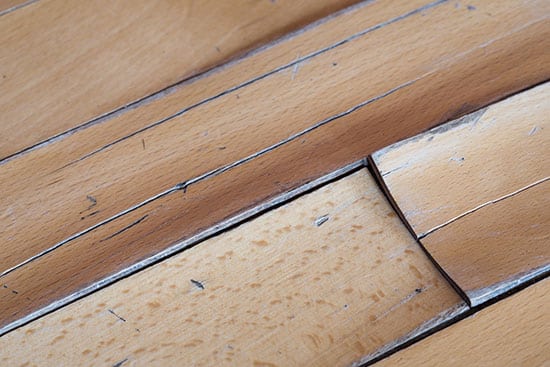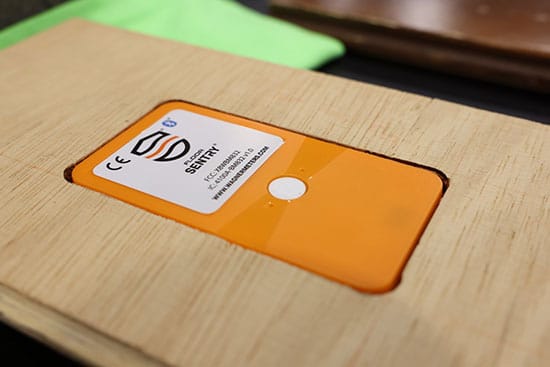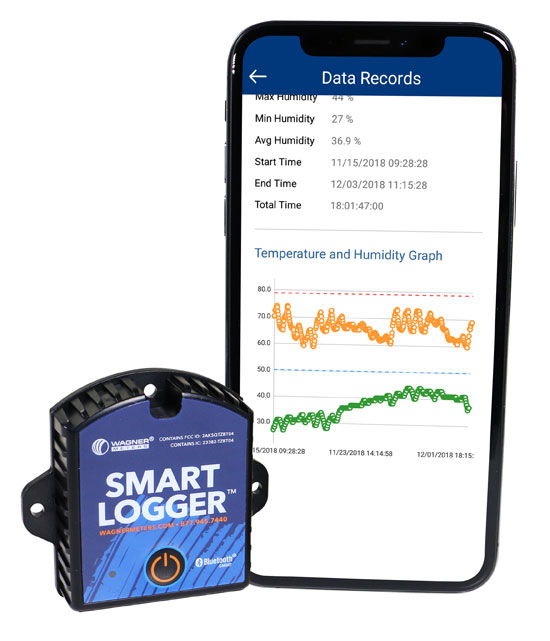Smart Wood Moisture Sensors for Wood Floor Durability

High moisture levels can cause your wooden floorboards to warp and buckle.
Even after you’ve installed your client’s floor, moisture infiltration or changes in temperature and humidity could alter their moisture levels. If left unchecked, these excess moisture levels could ruin your installation or threaten the integrity of the wood structures themselves.
The only way you and your client can be assured that the floor stays at appropriate moisture levels is to find some way to continually monitor the wood’s moisture content (MC).
That’s where smart wood moisture sensors come in!
Learn what makes them the perfect tool for the job as we take a look at:
- Moisture’s impact on wood structures
- What moisture sensors are
- Types of wood moisture sensors
- The latest wood moisture sensor technology
- Moisture sensors in action
- The sustainability of moisture monitoring
- Why you need a moisture sensor
Let’s start from the top.
Moisture’s Impact on Wood Structures
Wood normally contains some amount of moisture. The problem is excess moisture, which can actually damage the wood itself.
It can cause wooden materials to warp and bend, resulting in:
- Floorboards that cup, buckle, or crown
- Instruments that swell
- Furniture that warps or develops water stains
Fortunately, moisture sensors can help us monitor wood moisture levels and environmental conditions so we can prevent serious moisture damage.
What Are Wood Moisture Sensors?
Wood moisture sensors are instruments that provide real-time data to help you and your clients monitor changing moisture levels. Depending on what type you’re using, you can measure the moisture levels in the wood or the conditions of the surrounding air.
Both of these measurements will help you determine whether your wood is at risk of moisture damage.
Of course, pinless moisture meters are the most practical way to measure the wood’s moisture in a pinch. With a quick scan of the wood, it can tell you the MC. We always recommend performing these checks during the installation process.
But what about after?
That’s when moisture sensors can perform automated checks. They provide alerts via a smartphone app so your client can monitor the conditions of their wood floor long after it’s installed.
Types of Wood Moisture Sensors

The Floor Sentry sensor is embedded on the underside of a wooden floorboard, where it records relative humidity and temperature for up to seven years.
There are two main types of wood moisture sensors—ambient data loggers and embedded wood floor data loggers.
Ambient Data Loggers
Ambient data loggers record the temperature and relative humidity of the surrounding air. Because wood absorbs or releases moisture based on its environment, knowing these numbers can help you keep them consistent.
Floor installers might use these sensors during installation to keep ambient conditions stable.
But that doesn’t mean these sensors can’t be used after the fact.
Even after you’ve installed the floors, you can still leave this sensor behind to warn homeowners if their house is getting too humid or too dry for the floor.
They can even be used to monitor the conditions of a room that contains wooden furniture or instruments, helping make sure they’re not exposed to damaging moisture levels.
These loggers are convenient to use—just place them in the same room as your wood, and they’ll start recording. Some of these sensors even allow you to connect your device to an app so you can review temperature and humidity data from your phone.
Embedded Wood Floor Data Loggers
Embedded wood floor data loggers record the temperature and relative humidity of wood floors. In this way, they help prevent moisture damage by alerting you or your client when the conditions of the floor or subfloor go out of an acceptable range.
While the ambient loggers can be used during and after installation, the embedded floor logger allows your clients to keep track of any moisture changes that occur after the floorboards have been installed.
Like ambient sensors, embedded floor sensors can send their readings to a smartphone app for quick and convenient monitoring.
The Latest Wood Moisture Sensor Technology

Our Smart Logger ambient sensor can send data reports directly to your phone.
Wood moisture sensors are now more convenient than ever! Gone are the days of manually checking the relative humidity of installation sites. Now, modern moisture sensors can send readings to an app on your phone using Bluetooth technology.
Some apps will even compile this information into reports you can send to your clients or keep for your records.
And depending on what kind of moisture sensor you get, you can have a sensor that lasts anywhere from a couple months to a couple years.
Smart Wood Moisture Sensors in Action
Lucas Huffaker, a general contractor for Huffaker Flooring, uses an embedded wood floor data logger, Floor Sentry, for hardwood and engineered floors he installs.
Huffaker says, “It’s easy to use, syncs to the app well, and is a great insurance policy.”
He points out that the cost of a monitoring device like this moisture sensor is minuscule compared to the cost of dealing with damaged floors.
He also appreciates the fact that this moisture sensor’s data can’t be tampered with. This makes it a reliable defense for flooring installers in the event that they have to defend the quality of their work.
Moisture sensors protect a client’s floors while also protecting the reputation of flooring installers.
The Sustainable Future of Moisture Monitoring
Not only do moisture sensors help protect your floors; they also help protect the environment. It all comes back to the fact that knowing about high moisture levels can help you prevent moisture damage.
When wood becomes damaged due to moisture, sometimes the only option is to replace the wood completely and start over. As a result, that wood is wasted.
But by monitoring moisture and preventing that kind of damage, the wood floors will last for many years rather than ending up in a landfill. The longer the wood floors last, the more sustainable they’ll be.
And that’s just one of many important reasons to leave moisture sensors at your installation site.
Why You Need a Moisture Sensor
Wood moisture sensors will help you and your clients keep your floor installation in good condition for years to come. You’ll impress them by demonstrating just how dedicated you are to giving them quality, long-lasting floors.
And, in using sensors to identify high moisture levels before they become a problem, you’re much less likely to have to deal with moisture problems in floors you installed.
Looking for top-of-the-line moisture sensors? Check out our Smart Logger and Floor Sentry devices.
Want to learn more about our Floor Sentry device? Take a look at “Floor Sentry Best Practices” to learn how to get the most out of your moisture sensor!

Jason Wright, Business Development Specialist for New Products, joined Wagner Meters in 2019. He comes to Wagner with over 35 years of experience in the flooring industry.
Last updated on March 18th, 2025



